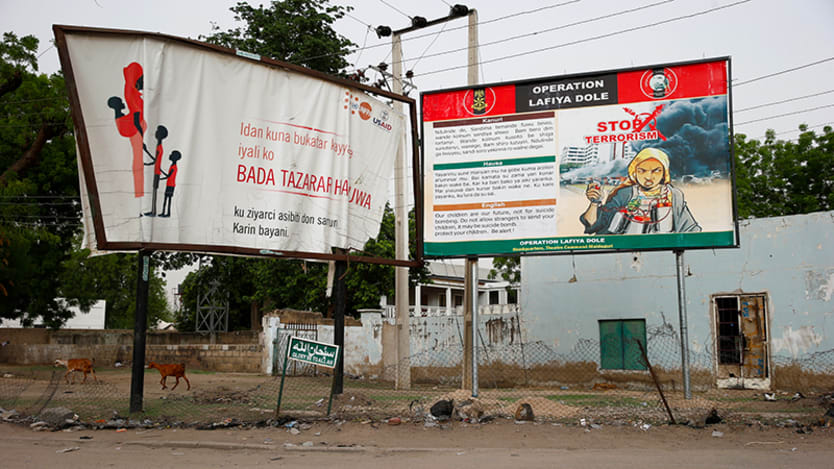
WASHINGTON — Conflict is the primary driver of terrorist activity, which cost the global economy $33 billion in 2018, according to the “Global Terrorism Index 2019” report.
Last year, 95% of deaths caused by terrorism happened in countries experiencing violent conflict. When countries with high levels of state-sponsored terrorism are included, this figure increases to 99%. The top 10 countries impacted by terrorism in 2018 were Afghanistan, Iraq, Nigeria, Syria, Pakistan, Somalia, India, Yemen, the Philippines, and the Democratic Republic of the Congo — all of which were involved in armed conflict in 2018.
“We need to invest more in making sure that nobody just thinks about creating a device that could explode or shoot.”
— Serge Stroobants, director of operations for Europe & MENA, Institute for Economics and Peace“You clearly see that terrorism is used as a tactic and a procedure by groups involved in violent conflict,” said Serge Stroobants, director of operations for Europe and the MENA region at the Institute for Economics and Peace, which produces the index. “These groups are also trying to find these regions of the world where there is low levels of governance.”
As peace gap widens, USAID must fix its 'procurement problem'
The gap between the most and least peaceful countries in the world continues to grow wider, according to the 2019 global peace index. Compiled by the Institute for Economics and Peace, the 13th annual index ranks 163 countries and territories in societal safety and security, ongoing domestic and international conflict, and militarism.
The “Global Terrorism Index,” now in its seventh year, examines terrorist activity in 163 countries. It studies aspects of terrorism including trends, geopolitical drivers, and socioeconomic conditions that allow it to thrive.
More people in conflict-affected countries die from terrorism, with attacks in these countries being three times more lethal than those in countries unaffected by conflict. Terrorism is used as a tactic of war by insurgent groups, which tend to target infrastructure, the military, and police, the 2019 report said. Its presence also prolongs conflicts, with those involving groups that started as terrorist organizations averaging 33 years — nearly double the average duration of all conflicts.
Stroobants said there needs to be more understanding of the basic motivation and grievances that lead to violent extremism.
“What we want to work on is on those root causes for violence and root causes for terrorism, those grievances that will lead to use of violence in different forms,” Stroobants said.
Afghanistan, the country most impacted by terrorism, also experienced the largest economic impact of terrorism, which cost the nation 19.4% of its GDP in 2018.
Deaths accounted for 58.1% of the economic impact of terrorism globally, while GDP losses accounted for 38.7%. Property destruction accounted for 2.2% and injuries 0.9%. Iraq — which fell from the top spot for the first time since the index’s inception — experienced the second-highest economic cost as a percentage of GDP among all countries, at 3.9%.
The overall economic impact of terrorism in 2018 was 38% lower than in 2017, with terrorism being a small percentage of the total cost of all forms of violence. Globally, the cost of violence — including armed conflict, homicide, and military expenditure — was $14.1 trillion on a purchasing power parity basis, which allows for the comparison of different currencies based on local buying power.
The $33 billion that terrorism cost the global economy in 2018 is “only a portion of the real economic impact, and it’s focusing on indicators that we use because we can count them and can measure,” Stroobants said. “What we do not include in there is, I would say, the indirect economic impact, because it is very difficult to calculate on a statistical basis.”
Those indirect impacts include how terrorism can cause earning and productivity losses and psychological trauma, the report said. These can also spread quickly through the global economy to affect economic growth, trade, financial markets, tourism, and foreign direct investment.
Stroobants said that while the international community has gotten reasonably good at preventing large-scale terrorist attacks, more is needed to prevent people from radicalizing in the first place.
“We invest a lot now in making sure that nobody can press a button or pull a trigger, but we need to invest more in making sure that nobody just thinks about creating a device that could explode or shoot,” Stroobants said.


